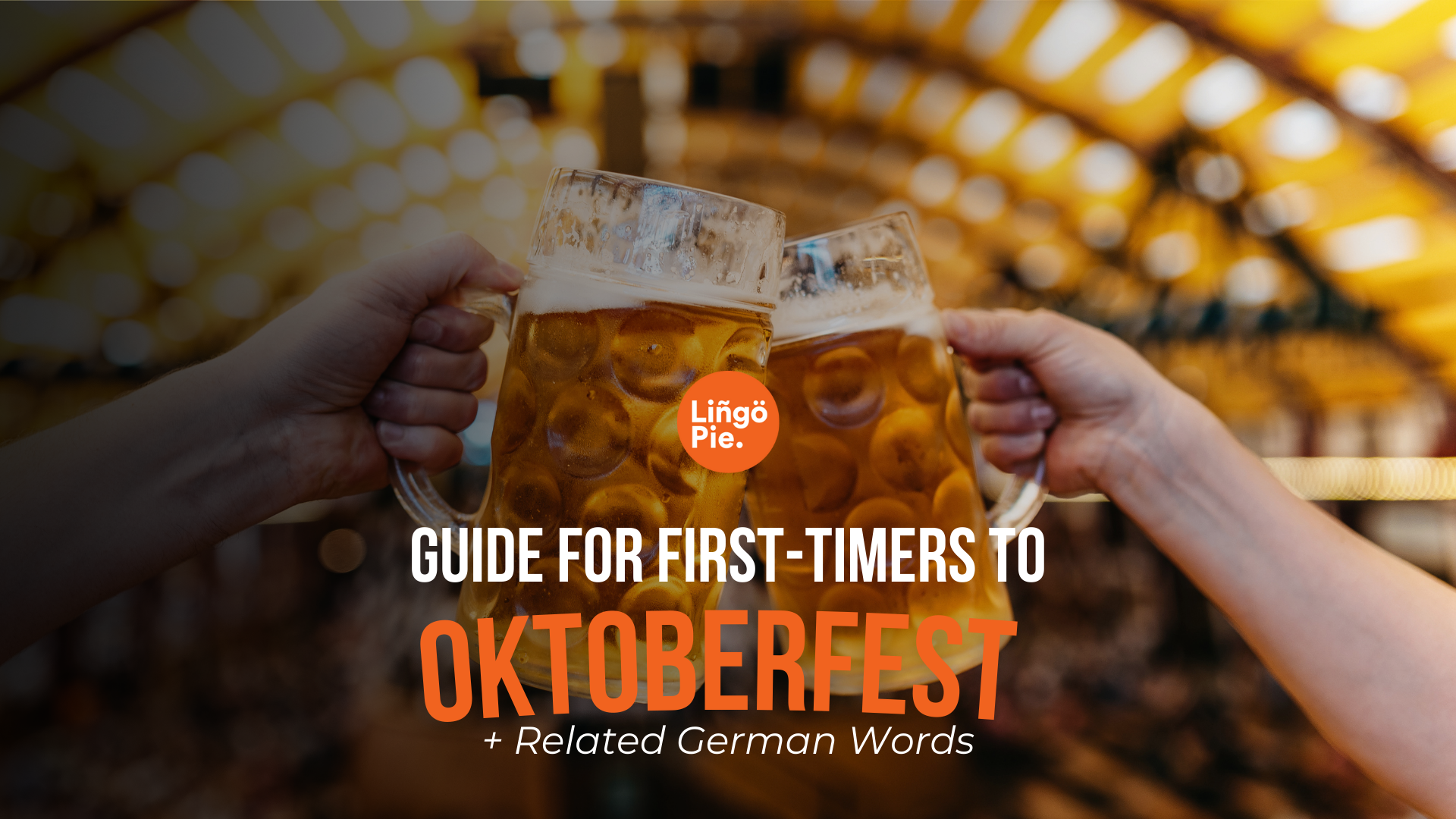Have you ever wished you could confidently strike up a conversation in Spanish with native speakers? Whether you're traveling, expanding your career opportunities, or simply wanting to connect with more people, mastering conversational Spanish is the key. In this blog post, we'll provide tips, strategies, and resources that will help you become a fluent, confident Spanish conversationalist.
Short Summary
- Mastering conversational Spanish is essential for connecting with others and understanding their culture.
- Strategies include practicing with native speakers, watching TV shows & movies in Spanish, and using language apps.
- Regular practice, involvement in language groups and setting clear goals are key tips to maintain your skills.
The Importance of Conversational Spanish

Learning Spanish is more than just memorizing vocabulary and grammar rules. It's about truly connecting with others, understanding their culture, and opening up a whole new world of possibilities. If you're ready to dive in and learn Spanish, you're about to embark on an incredible journey for Spanish learners.
By focusing on conversational Spanish, you'll be able to navigate everyday situations, make friends, and even boost your career prospects. One of the best ways to get started with learning conversational Spanish is by familiarizing yourself with basic Spanish phrases. This not only helps you speak Spanish, but also allows you to truly experience the local culture and hospitality, making your language journey even more rewarding.
Key Components of Conversational Spanish
To truly master conversational Spanish, it's essential to become familiar with its key components, such as slang and colloquialisms, informal language, and regional differences.
By understanding and incorporating these elements into your speech, you'll be able to communicate more effectively and authentically with native speakers. If you are interested in other comprehensive guides; check out our guide on how to learn Spanish.
Slang and Colloquialisms
Slang and colloquialisms are informal language forms that help you sound more natural when speaking Spanish. Slang is typically used by specific groups, while colloquial language is more common in everyday conversations. For example, in Spanish, you might hear "to" (guy), "guay" (cool), or "vale" (ok) as slang, while colloquial expressions might include "encantado de conocerte" (nice to meet you).
Learning slang and colloquialisms not only helps you sound more authentic, but also gives you a better understanding of the culture and language. Watching Spanish movies and TV shows with Spanish subtitles can help you pick up on slang and colloquialisms while improving your listening and reading skills.

Informal Language
Informal language is what you'd use in everyday conversations, as opposed to the more formal language used in official settings or when addressing people in positions of authority. By becoming comfortable with informal language, you'll be able to communicate more fluently and confidently in a variety of situations.
Some examples of informal language in Spanish include casual ways to say goodbye, such as "Hasta luego!", "Hasta pronto!", or "Chao/Chau". Becoming familiar with informal expressions like these will help you better connect with native speakers and navigate everyday conversations with ease. In contrast, understanding formal Spanish will enable you to communicate effectively in more professional settings.
Regional Differences
When learning conversational Spanish, it's important to be aware of regional differences, as the language can vary significantly between Spain and Latin America, and even within Latin America itself. For instance, pronunciation and vocabulary can differ between countries, making it essential to adapt your language skills to the specific Spanish-speaking environment you're in. Here you can read about the specifications of the Mexican accent.
Being aware of these regional differences not only helps you communicate more effectively with Spanish speakers, but also deepens your understanding of the rich and diverse cultures within the Spanish-speaking world. For example, in Spain, people might say "Cómo está (usted)?" instead of "How are you?", while in Latin America, you're more likely to hear "Cómo anda (usted)?"
Strategies for Learning Conversational Spanish
To improve your conversational Spanish skills, it's important to employ a variety of strategies, such as practicing with native speakers, watching Spanish TV shows and movies, and using language apps. By incorporating these techniques into your language learning routine, you'll be better equipped to overcome common challenges and enhance your conversational abilities.

Practice with Native Speakers
Practicing conversational Spanish with native speakers offers numerous benefits, including picking up on slang, mastering formal speech, expanding your vocabulary, and understanding the social context. Regular practice sessions will help you become more comfortable with the language and contribute to your overall fluency.
To make the most of your practice sessions, consider setting aside at least 30 minutes per session, taking notes of new words, and recording your conversations to review later and improve your pronunciation. Additionally, ensure that both you and your conversation partner have equal opportunities to ask and answer questions. You can find a conversation partner in online communities for language learning.
Watch Spanish TV Shows and Movies

Watching Spanish TV shows and movies can greatly enhance your listening skills, teach you new vocabulary, and familiarize you with different accents and dialects. Engaging with Spanish-language media allows you to immerse yourself in the language and culture while enjoying captivating stories and characters.
Some great Spanish TV shows and movies to watch include Money Heist, Elite, Las Chicas del Cable, The Cook of Castamar, Daughter From Another Mother, and Stolen Away. These shows span various genres and can provide valuable insights into different aspects of Spanish-speaking cultures, as well as help you pick up on slang and colloquialisms. Follow Lingopie's Youtube Channel for many Netflix based lessons such as this Casa de Papel lesson.
Lingopie is an innovative language learning platform that combines the power of entertainment with educational content. It offers a unique and engaging approach to language acquisition, leveraging popular TV shows and movies from around the world. With Lingopie, learners can immerse themselves in authentic, real-life scenarios, while improving their language skills in a fun and enjoyable way. The platform provides subtitles in both the target language and the learner's native language, allowing for easy comprehension and vocabulary expansion.

Utilize Language Apps
Language apps offer a convenient and effective way to practice conversational Spanish, learn new vocabulary, and track your progress. With their interactive lessons, Spanish audio recordings, and diverse features, language apps allow you to easily incorporate Spanish practice into your daily life.
Some of the best language apps for learning conversational Spanish include Lingopie, Duolingo, Babbel, Rosetta Stone, and Memrise. By utilizing these apps and their various features, you can improve your conversational Spanish skills and gain confidence in your ability to communicate with native speakers. Read our post about the most interesting language app on the market.
Boosting Your Spanish Vocabulary

Expanding your Spanish vocabulary is crucial for improving your conversational skills and expressing yourself more effectively. One way to boost your vocabulary is by reading Spanish books, which not only exposes you to new words and phrases, but also provides insights into the culture and history of Spanish-speaking countries.
Another way to enhance your vocabulary is by watching Spanish movies and engaging with other Spanish language content, such as podcasts and blogs. By consuming content in Spanish and creating vocabulary lists based on the new words you encounter, you'll be well on your way to becoming a more confident and fluent Spanish speaker.
Overcoming Common Challenges in Conversational Spanish

Some common challenges when learning conversational Spanish include understanding native speakers who talk quickly, mastering all the tenses, and dealing with false friends (cognates). However, by implementing strategies such as practicing with native speakers, watching Spanish TV shows and movies, and using language apps, you can overcome these hurdles and enhance your conversational abilities.
To further improve your Spanish conversation skills, consider setting realistic goals, breaking them down into smaller tasks, and rewarding yourself for reaching milestones. This structured approach to learning will help you stay motivated and focused on your language journey.
Immersing Yourself in Spanish-Speaking Environments

Immersing yourself in Spanish-speaking environments is a highly effective way to enhance your conversational skills and deepen your understanding of the culture. By surrounding yourself with native speakers and engaging in authentic conversations, you'll be able to hone your language skills and gain valuable insights into the Spanish-speaking world.
There are various ways to immerse yourself in Spanish-speaking environments, such as participating in language schools, homestays, and volunteer programs abroad. Alternatively, you can explore local immersion opportunities, such as taking classes at a local college or university, joining a Spanish-speaking club, or attending Spanish-speaking events.
Tips for Maintaining Conversational Spanish Skills
Maintaining and improving your conversational Spanish skills requires regular practice and commitment. Joining language groups can provide you with the opportunity to practice with native speakers, learn about the culture and language subtleties, and receive support from fellow language learners.
It's also essential to set clear goals for your language learning journey. By establishing achievable milestones and rewarding yourself for progress, you'll stay motivated and focused on improving your conversational Spanish abilities.
Conversational Spanish Resources

A wealth of conversational Spanish resources is available to help you on your language learning journey. Some top resources include Baselang, News In Slow Spanish, Pimsleur, SPANISHDICT, StoryLearning Uncovered Courses, italki, Coffee Break Spanish, Spanish Uncovered, Easy Spanish YouTube Channel, XKCD Comic En Español, Glossika, Madrigal's Magic Key to Spanish, Language Transfer, El Blog para Aprender Español, and Spanish Con Salsa.
Lingopie offers interactive features such as flashcards, quizzes, and personalized learning recommendations to enhance the learning experience through TV and music. Whether you're a beginner or an advanced learner, Lingopie provides a valuable resource for language learners to practice listening, speaking, and comprehension skills, all while enjoying entertaining content. Try Lingopie product for free with our 7-day Free-trial.

By utilizing these resources, you can practice speaking, listening, reading, and writing in Spanish, while also learning about the culture and customs of a specific spanish speaking country. These resources offer a comprehensive approach to mastering conversational Spanish and enhancing your overall language skills.
Summary
Mastering conversational Spanish opens up a world of opportunities for personal growth, career advancement, and cultural appreciation. By focusing on key components like slang, informal language, and regional differences, and employing strategies such as practicing with native speakers, watching Spanish TV shows and movies, and using language apps, you can become a confident and fluent Spanish conversationalist. Embrace the challenge, immerse yourself in Spanish-speaking environments, and enjoy the rewarding journey of learning conversational Spanish.
Frequently Asked Questions
What is considered conversational Spanish?
Conversational Spanish is the everyday language used in real-life conversations. It includes regional words and expressions, informal phrases and idioms, and other conversational elements of the language which are not found in traditional textbooks.
This type of Spanish can help you become an effective communicator in everyday situations.
How can I learn conversational Spanish?
If you're looking to learn conversational Spanish, the best approach is to keep a notebook of phrases you learn, pay attention to connectors and fillers, and record yourself speaking.
With dedication and practice, you can become confident in speaking Spanish conversationally!
How long does it take to speak conversational Spanish?
With dedication and focus, you can learn conversational Spanish within 8-12 months or 250-350 hours. This requires dedicating an average of one hour each day to mastering the language.
By breaking down the language into manageable chunks, you can make steady progress and eventually become fluent. Start by learning the basics of grammar and pronunciation, then move on to more complex topics such as verbs.
Can I learn Spanish by watching Spanish TV?
Although it’s possible to learn Spanish by watching Spanish TV, you are more likely to have better long-term success if you use other methods of learning Spanish as well. Taking classes, reading books or using language-learning apps will all help you achieve a greater level of fluency and comprehension than watching TV alone. Try Lingopie streaming platform for language learning for free. You can learn with Netflix by using enhanced language learning features.
What are some effective strategies for learning conversational Spanish?
By taking the time to learn the basics, conversing with native Spanish speakers as often as possible, and using online language tools, you can effectively learn to converse in Spanish.
It doesn't have to be a daunting task. With the right resources and dedication, you can become fluent in Spanish in no time.







![30+ Modern English Slang Terms For Money [Guide]](/blog/content/images/size/w300/2025/06/Slang-term-for-money.jpg)
![5 Official Spanish Language Tests To Show Your Proficiency Level [Guide]](/blog/content/images/size/w300/2025/06/Spanish-Language-Tests.jpg)

![Why Memorizing Spanish Words Won’t Make You Fluent [Tips]](/blog/content/images/size/w300/2025/06/how-to-practice-spanish-vocabulary.jpg)